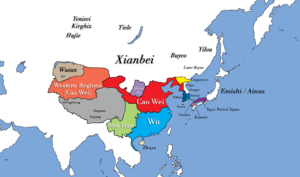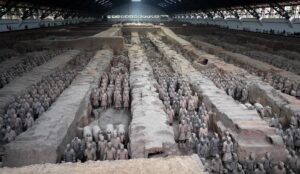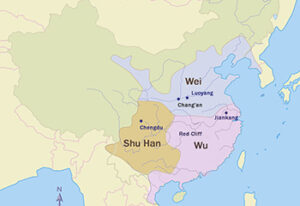Amidst the chaotic Three Kingdoms period in Ancient China, a brilliant military strategy known as the “Empty Fort Strategy” emerged, leaving enemies perplexed and retreating in fear. This article delves into the historical accounts of this clever tactic, shedding light on its origins, implementation, and the profound impact it had on warfare during that era.




The Three Kingdoms Period:
The Three Kingdoms period in Ancient China lasted from 220–280 AD. During this time, China was divided into three regimes: Wei, Shu, and Wu. These three kingdoms fought for control in a series of wars.
The Three Kingdoms period (220-280 AD) in China witnessed a power struggle among three major factions: Wei, Shu, and Wu. As warlords vied for control and alliances shifted, military innovation became crucial to gain an upper hand. The “Empty Fort Strategy” was just one of many remarkable tactics devised during this tumultuous time.
Origins of the Empty Fort Strategy:
The origins of the Empty Fort Strategy can be traced back to the renowned military strategist and statesman, Zhuge Liang, also known as Kongming. Zhuge Liang served as the chief advisor to Liu Bei, the ruler of the Shu Kingdom. It is believed that Zhuge Liang first employed this cunning gambit during the campaign against the Wei Kingdom’s brilliant general, Sima Yi.
The Concept of the Empty Fort Strategy:
The essence of the Empty Fort Strategy lies in deceiving the enemy by deliberately presenting a seemingly unguarded or weak position. The objective is to instill uncertainty, fear, and hesitation within the adversary’s ranks, forcing them to second-guess their actions and strategy.
Implementation and Execution:
The success of the Empty Fort Strategy depended on the enemy’s psyche, exploiting their fears and preconceived notions. The first step involved choosing a suitable location—an actual city or stronghold—to portray unwavering confidence. The defending forces would conceal themselves, creating an illusion of vulnerability.
Psychological Warfare:
Once the enemy spotted the seemingly undefended city, doubt often consumed their decision-making process. An empty fort contradicted their expectations, leading them to question the motive, suspecting hidden traps or ambushes. Fear of walking into an elaborate trap fueled a sense of unease and paranoia within the enemy’s ranks.
Result and Impact:
The Empty Fort Strategy often compelled adversaries to retreat, fearing unexpected consequences or an imminent trap. The psychological toll inflicted by this tactic demonstrated the power of manipulation, instilling doubt and fear within a seemingly impregnable force.
Legacy and Influence:
The Empty Fort Strategy left an indelible mark on warfare throughout China’s history. Its innovative approach to psychological warfare inspired many subsequent military leaders. This strategy highlighted the importance of understanding and exploiting the human psyche, underlining the notion that warfare is not solely about physical confrontation but also the manipulation of thoughts and emotions.
Conclusion:
The Empty Fort Strategy stands as a testament to the brilliance of ancient Chinese military tactics, specifically during the Three Kingdoms period. Zhuge Liang’s ingenuity and ability to exploit psychological vulnerabilities introduced a new dimension to warfare. By deceiving enemies with the illusion of an undefended city, the Empty Fort Strategy showcased the power of psychological manipulation, leaving a lasting impact on battle strategies throughout history.

